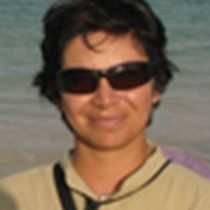We began this day by exploring North Seymour Island, which is home to the two species of frigatebirds—magnificent and great frigatebirds—as well as swallow-tailed gulls, and blue-footed boobies.
After a dry landing on a small concrete platform, we started an exploration walk. All along the path we saw many males of both species of frigates with their large and bright red gular sacs inflated to attract mates. There were also many juveniles waiting for their parents to return to feed them. Along the trail, the vegetation looked a bit dry, but frigates looked very comfortable sitting on the top of trees and bushes.
One of the most attractive species of seabird in the Galapagos is the blue-footed boobiy, and today we encountered several couples doing different things. Some couples were courting, while others were already incubating one or two eggs. There were also several nests with one or two very young fluffy chicks, and many males were also eagerly calling for a partner with their long, loud whistle.
Many of us had the opportunity to see Galapagos sea lions, and also Galapagos land iguanas, especially along the coast. There was a very refreshing breeze and the waves were very impressive. We stopped to enjoy the landscape, and a few of us saw a couple of sharks swimming along the coast through the waves.
We returned to the National Geographic Endeavour II and headed towards Rábida Island. This island has one of the most colorful beaches in the archipelago, as the sand is a bright red color. We went snorkeling from the shore as well as from the Zodiacs, and had the opportunity to observe the abundant marine world with many species of fish, sharks, and green sea turtles. We also noticed that all around the anchorage site there were many small mobula rays jumping high up in the air—these rays gave a great show, as some were very close to our ship.
At the end of the afternoon we returned aboard to rest before our first session of recaps of the day.







